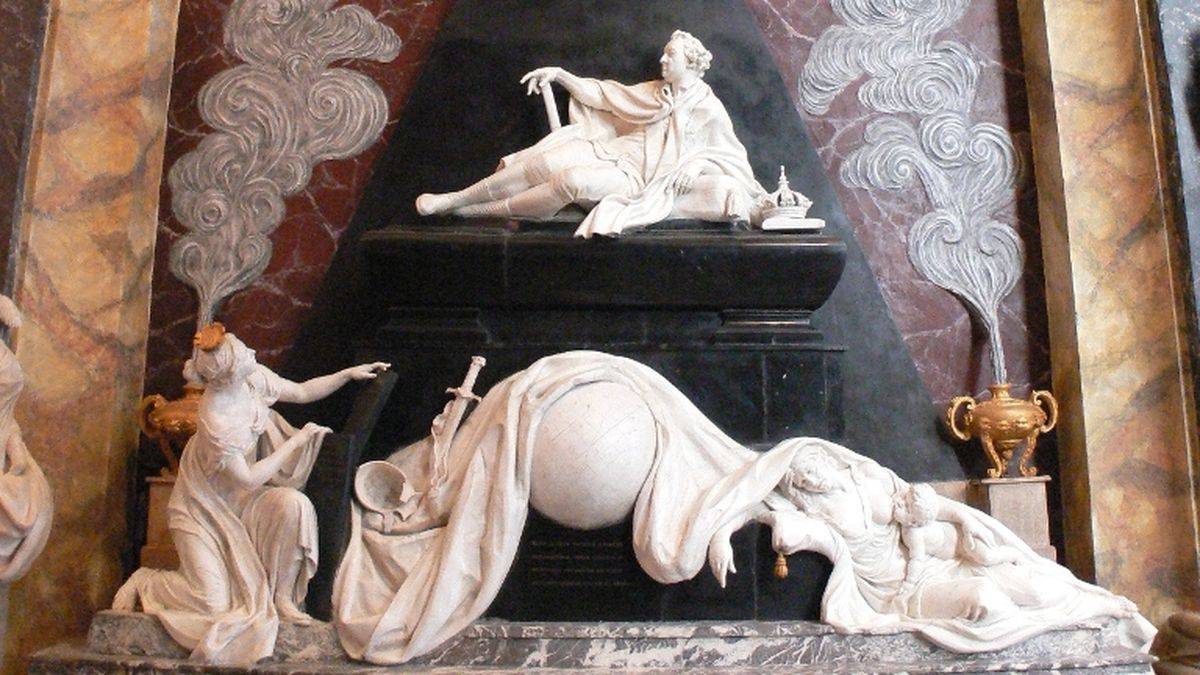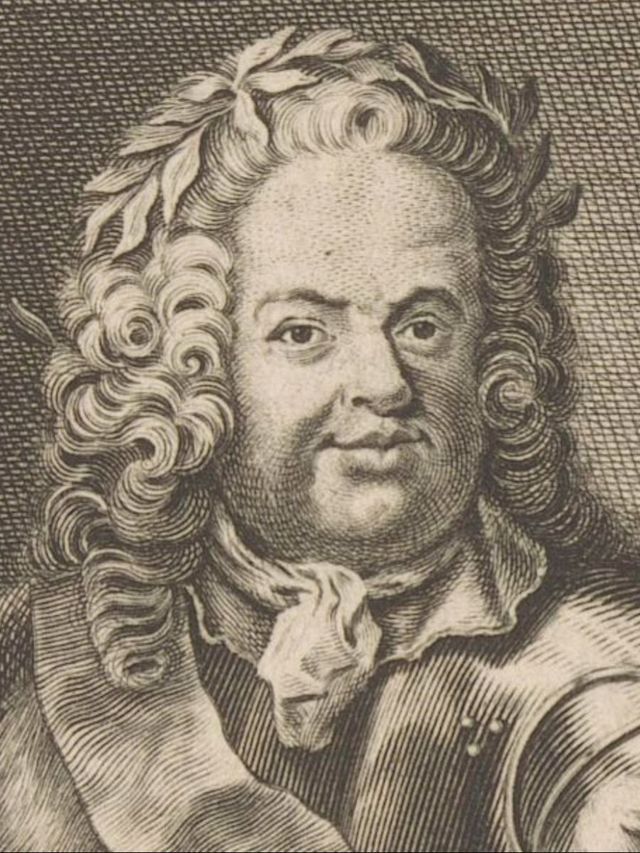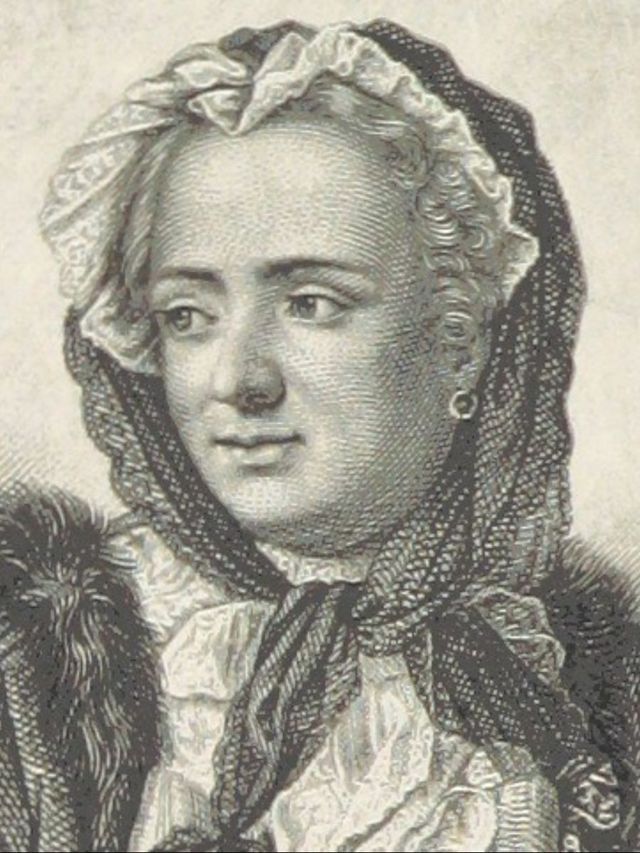 Stanislas' grave | ©François BERNARDIN / CC-BY
Stanislas' grave | ©François BERNARDIN / CC-BYA vault for Stanislas
Don’t touch!
The ex king of Poland and duke of Lorraine, Stanislas Leszcinski, turned up in Nancy in 1737.
He saw the old Notre-Dame and was stunned. He had to re-raise it, quickly!
So, on August 14th 1738, the first stone was laid down. But inhabitants didn’t like this upheaval…
They moaned, they were chocked! He had razed the oldest church in Nancy!
All for Stanislas
And yet, they had to get used to… In September 1741, the building work ended.
Stanislas gathered all the best artists of his time: iron manufacturer Jean Lamour made the gates, Provençal painted the ceiling…
On the façade, we have two niches housing the founders’ statues: saint Stanislas and saint Catherine, destroyed during the French Revolution, then replaced in 1850 by Jorné Viard.
Below, Stanislas’ coat of arms. Inside, we have the Leszcinski’s graves. Because Stanislas wanted to be buried here with his family!
Madame’s monument
The first one to be buried here was Catherine (Stanislas’ wife), on March 1747.
Her grave was made by Nicolas-Sébastien Adam: he represented her on her knees, next to a pyramid.
An angel takes her to the sky. The scepter and the crown lie at her feet.
At the top of the scene, Poland blazon and Catherine’s family’s coat of arms (a small boat).
We also have the Polish eagle with this sentence: Manus domini confortavit te et ideo eris benedicta in aeternum (″God’s hand made you stronger, that’s why you’ll be blessed for eternity.″).
On January 1756, the duchess Ossolinka (Stanislas’ cousin) was buried here, 5 months after her husband, the duke of Ossolinki.
Stanislas’ grave
Stanislas was buried on February 23th 1766.
King of France Louis XV (his son-in-law) ordered his grave to the sculptor Louis-Claude Vassé.
Stanislas is lying, his scepter next to him, the allegory of Lorraine and of Charity by his side.
The sentence says:
Hic jacet Stanislaus I. cognomine beneficus, Per varias sortis humanae vices jactatus, non fractus, Ingens orbi spectaculum, Ubique, vel in exilio, Rex, beandis populis natus, Ludovici XV generi complexu exceptus, Lotharingiam, palris, non Domini ritu, rexit, fovit, exornavit. Hunc pauperes quos aluit, urbes quas instauravit, religio Quam exemplis instituit, scriptis etiam tutatus est, Insolabiliter luxere. Obiit 23 Febr. An. 1766, aetat 88.
″Here lies Stanislas the benefactor, king in exile who fed the poor, restored the cities. He died at the age of 88 years old.″
You know what? The French philosopher Diderot criticized the grave!
He didn’t like the bad composition of the scene, because of that ugly triangle formed by the 3 characters!
Marie’s heart
Stanislas’ daughter, Marie, Louis XV’s wife, wanted her heart to be buried in the church, after her death.
In 1768, when the moment came, Louis XV asked a monument to sculptor Vassé: this one represented the queen in a medallion with little genius weeping.
A sentence says:
D. O. M. Mariae Sophiae, Ludovici XV uxoris, Stanislas filiae, Regno, patre, coelo dignissimae, Cor ex testamento. Obiit Versaliis, 24 junii 1768.
″Marie-Sophie, Louis XV’s wife, king Stanislas' daughter, her heart lies here, June 24th 1768.″
Merry bones between France and Russia
During the French Revolution, they melt the bells, they exhumed the bodies from their graves and put them in a common grave.
In 1814, Polish count Michel Sokolincki came in the church to say a Mass in Stanislas’ memory.
A gossip says the count brought Stanislas’ bones back with him, in a piece of his dressing gown!
He put them somewhere in Poland or Russia…
Worried, Nancy city opened the tombstone and realized that all the bones were here! Phew...


